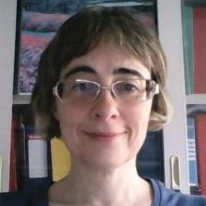Assessment of Earthquake-Induced Soil Liquefaction Hazard
A special issue of Geosciences (ISSN 2076-3263).
Deadline for manuscript submissions: closed (30 November 2022) | Viewed by 22174
Special Issue Editors
Interests: soil liquefaction; ground response analysis; seismic hazard; GIS; critical infrastructures; disaster risk reduction
Special Issues, Collections and Topics in MDPI journals
Interests: engineering geological mapping; hazard assessment (subsidence, landslide, liquefaction); geological interpretation of satellite interferometric data
Special Issues, Collections and Topics in MDPI journals
Special Issue Information
Dear Colleagues,
Earthquake-induced liquefaction is one of the most relevant phenomena of ground failure that may have disastrous consequences on structures and infrastructures. Recent examples include the 2010-2011 seismic sequence at Christchurch in New Zealand, the 2011 Tohoku Oki earthquake in Japan, the 2012 Emilia earthquakes in Northern Italy, the 2018 Sulawesi-Palu earthquake in Indonesia and the 2020 sequence in Croatia.
Liquefaction of soils is a phenomenon of instability affecting saturated deposits of loose sands which abruptly reduce their stiffness and strength due to pore water pressure build-up caused by severe ground shaking. Once triggered, liquefaction of soils may yield large deformations of the ground surface with sinking and overturning of buildings and infrastructures. In the Canterbury-Christchurch sequence, liquefaction affected nearly 60,000 residential buildings and the horizontal infrastructure over one third of the city. It is estimated that the total impact of the Canterbury-Christchurch earthquake sequence cost New Zealand approximately €23 billion. During the Japan 2011 Tohoku earthquake, approximately 27,000 houses, more than 2,000 levees and several ports suffered damage from the resulting ground liquefaction. During the Emilia sequence, 12,000 buildings were severely damaged and heavy damage to structures were often associated with ground failure and soil liquefaction. Ground deformations associated to liquefaction during the 2020 sequence in Croatia induced damages to critical assets, such as transport infrastructure, levees and embankment dams.
Efforts worldwide have been spent in recent years to mitigate liquefaction-related damage including developing multi-scale approaches and technical guidelines for the evaluation of the liquefaction potential.
This special issue is aimed at collecting the most prominent research results in the assessment of liquefaction hazard by combining interdisciplinary approaches coming from earthquake geotechnical engineering, engineering geology, soil dynamics, geomorphology and hydrogeology, to provide an overview of the innovative methodologies and a comprehensive state of the art in this field.
Dr. Francesca Bozzoni
Prof. Dr. Claudia Meisina
Guest Editors
Manuscript Submission Information
Manuscripts should be submitted online at www.mdpi.com by registering and logging in to this website. Once you are registered, click here to go to the submission form. Manuscripts can be submitted until the deadline. All submissions that pass pre-check are peer-reviewed. Accepted papers will be published continuously in the journal (as soon as accepted) and will be listed together on the special issue website. Research articles, review articles as well as short communications are invited. For planned papers, a title and short abstract (about 100 words) can be sent to the Editorial Office for announcement on this website.
Submitted manuscripts should not have been published previously, nor be under consideration for publication elsewhere (except conference proceedings papers). All manuscripts are thoroughly refereed through a single-blind peer-review process. A guide for authors and other relevant information for submission of manuscripts is available on the Instructions for Authors page. Geosciences is an international peer-reviewed open access monthly journal published by MDPI.
Please visit the Instructions for Authors page before submitting a manuscript. The Article Processing Charge (APC) for publication in this open access journal is 1800 CHF (Swiss Francs). Submitted papers should be well formatted and use good English. Authors may use MDPI's English editing service prior to publication or during author revisions.
Keywords
- earthquake-induced soil liquefaction
- assesment of liquefaction hazard
- liquefaction manifestations
- zonation
- settlements
- lateral spreading
- GIS
- liquefaction-induced effects on structures and infrastructures






